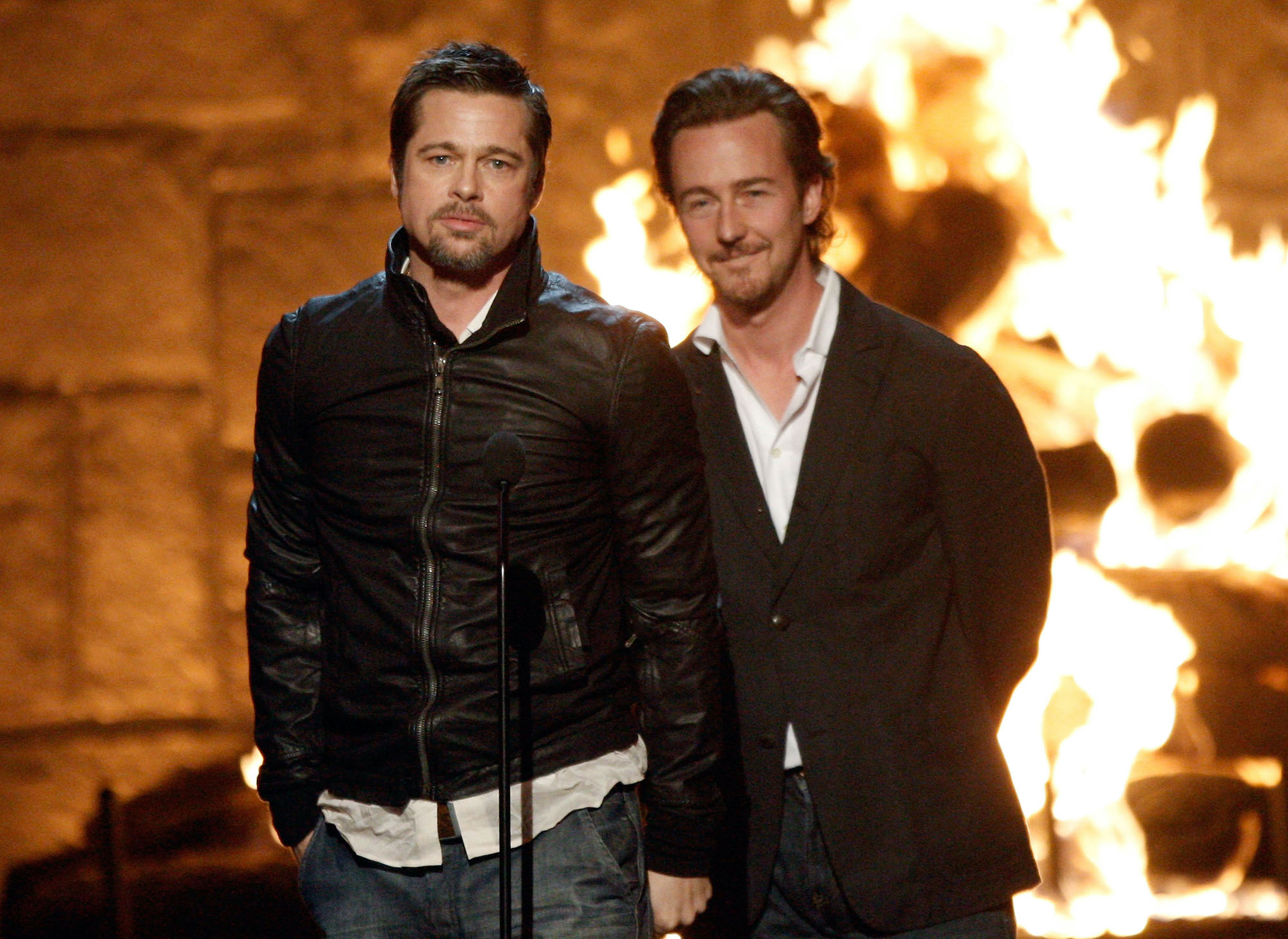‘Fight Club’: What Is the Narrator’s Real Name?
Part existential satire, part social commentary, the movie Fight Club explores toxic masculinity in all its bloody glory. The brutal story of consumerism and revenge is helped along by a monotone male narrator whose identity is never clearly defined.

Some movie watchers believe the narrator was named Jack, some believe him to be Tyler Durden. To make matters even more confusing, closed-captions on the Fight Club DVD reveal him to be someone named Rupert. Which is correct? Here’s what we know.
The first scene of ‘Fight Club’
Fight Club opens with a scene inside the neural pathways of an insomniac narrator who never reveals his true name, although he occasionally uses the phrase “I am Jack’s (fill in the blank)” after reading articles with a similar title in a fictional magazine called Annotated Reader.
Those in the know understand the reference to Reader’s Digest magazine which published stories such as “I Am Joe’s Pancreas” that were ostensibly written by human organs in the first person.
Reader’s Digest objected
In screenwriter Jim Uhls’ adaptation of Chuck Palahniuk’s original Fight Club book, the name Joe was changed to Jack, and the magazine name was changed due to Readers Digest copyright issues, according to IMDb. That’s why the articles read by the narrator were called “I am Jack’s (fill in the blank).”
This also explains why many Fight Club watchers believe the narrator’s name was indeed Jack.
Clues in an Ikea-inspired press package
Movie reviewers and entertainment writers received Fight Club press packages that were oddly similar to an Ikea catalog. Throughout the press package, the narrator is called Jack. The booklet that came with DVDs of Fight Club also refer to the narrator as Jack. Further confirmation almost came from Edward Norton in the Blu-ray and DVD audio commentary in which he says he knows the narrator’s name but will never reveal it while at the same time noting that the narrator was called “Jack” in the script.
The press package was not the only sideways nod to Ikea associated with Fight Club. In an early scene, computer graphics were brilliantly employed to fill the narrator’s apartment with Ikea items one piece at a time. This scene, which opens with Norton perusing a mid-grade furniture catalog while sitting on a toilet, establishes director David Fincher’s totally cynical tale of consumer culture and disaffected Gen X apathy.
As the scene progresses, it becomes an empty room in the narrator’s apartment. A headline reading, “Use Your Imagination” overtakes the frame before dissolving into what Reel 3 describes as “three-dimensional reality” as the empty room is filled with Ikea pieces, complete with catalog prices and product descriptions. As each item appears, the narrator (whose name we still do not know) dispassionately lists the items:
“The Klipsk personal office unit. The Hovetrekke home exerbike. The Johanneshov sofa with the Strinne green stripe pattern…”
All of a sudden, the narrator enters the frame to illustrate his almost hallucinogenic and decidedly surreal state of mind. The narrator’s line at the end of the shot further reveals the dark and disaffected theme of Fight Club: “I’d flip through catalogs and wonder what kind of dining set defines me as a person.”
SPOILER ALERT
If you are starting to think that Jack, Tyler Durden, and the narrator are all the same person, you are on the right track to understanding the oddly disturbing movie that is Fight Club.
At Reel 3, author Jason Haggstrom published his in-depth take on the twisted themes and myriad meanings behind Fight Club. Haggstrom describes the narrator as a man ridden with depression, apathy, and loneliness who invents a second, more dominant personality who is intent on destroying the identity-destroying corporations, such as Ikea, to whom the narrator feels enslaved.
This second personality is Tyler Durden. Portrayed by Brad Pitt, Durden’s sculpted good looks perfectly personify brand identity. Upon meeting for the first time, Durden tells the narrator that he’s everything he wishes he was himself:
“I look like you want to look, I f— like you want to f—, I am smart, capable, and most importantly, I am free in all the ways that you are not.”
The narrator, thinking that he might become like Durden someday, buys into the Fight Club brand and begins to reconstruct his personal identity while dismantling his loyalty to corporate brands. In fact, every character at Fight Club brawls believed that they were part of a “generation of men raised by women” and that raising fists against others made them feel like men again.
The biggest twist of the film is that Durden and the narrator are indeed the same person and that, as Haggstrom so brilliantly deduced, Durden’s relationship to the narrator is identical to the relationship between Fight Club viewers and their favorite name brands.
And we’re still not 100 percent sure of the narrator’s name.


